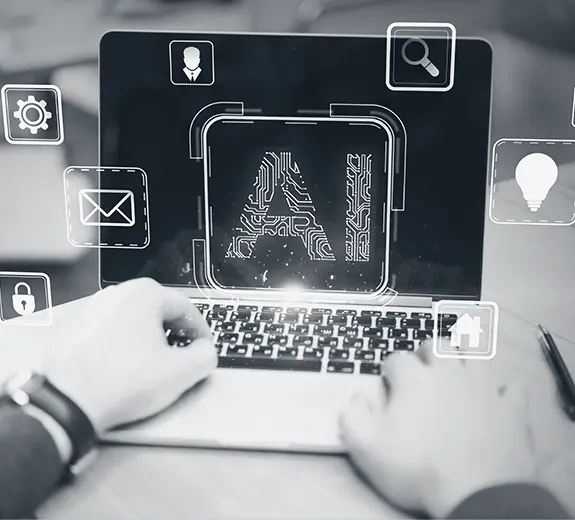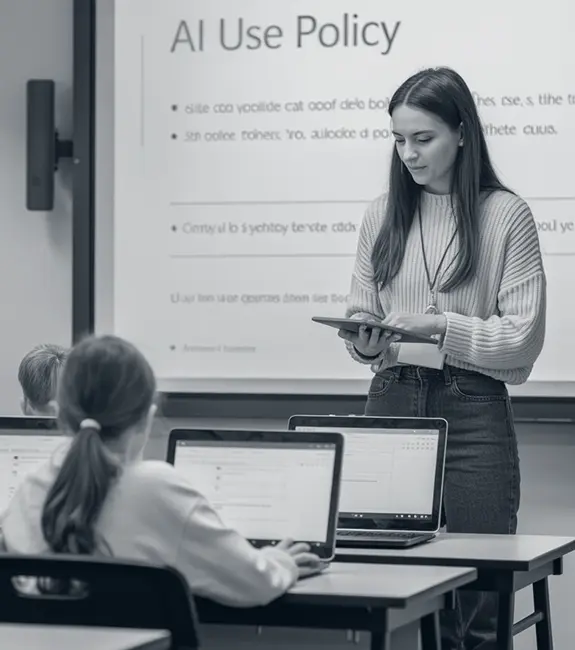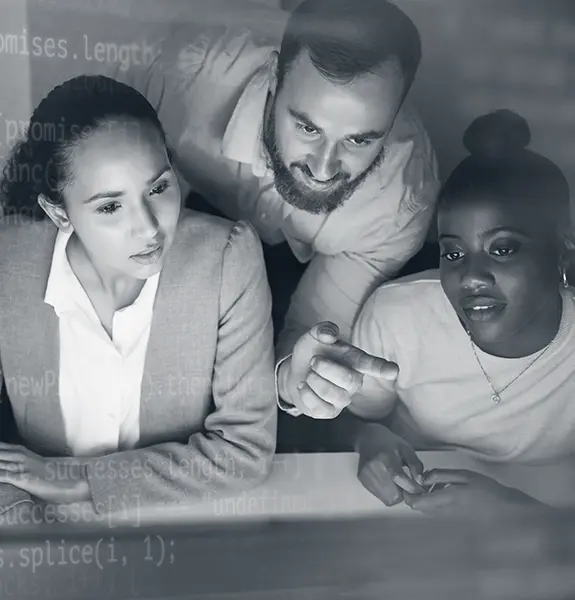AI Integration Consulting for Organizations
We help organizations adopt AI in ways that actually work for their people. Our evidence-based approach aligns AI tools with real workflows, reduces inefficiency, and ensures new technology improves decision-making rather than replacing human judgment.
Overview
New technologies – especially AI – promise to make work easier and organizations more effective. But most technology adoption fails because it doesn’t account for how people actually work. We help organizations figure out how to use AI and other technologies in ways that fit your people and processes, ensuring technology amplifies rather than replaces human judgment.
If you also need help diagnosing organizational challenges before adopting new technology, explore our Strategic Research & Organizational Assessment Consulting service.
UNDERSTANDING WHICH AI TOOLS ACTUALLY HELP
Organizations face overwhelming pressure to “do something with AI” but rarely know what makes sense for their specific situation. We start by understanding your actual needs – not what technology is available, but what problems you’re trying to solve. Often the technology you think you need isn’t what would actually help. Based on your needs and how your organization actually operates, we evaluate which technologies might work and which would create more problems than they solve.
Many organizations discover that choosing the right AI tools is tied to the quality of their existing systems. Our Business Process Consulting & Optimization service helps address those operational bottlenecks.


WHO NEEDS TECHNOLOGY INTEGRATION SUPPORT
You might need our help if you’re overwhelmed by AI options and don’t know what’s actually useful for your work. Perhaps you tried adopting new technology and it didn’t stick – people resisted it or worked around it. You might be concerned about bias in AI systems affecting your hiring, promotion, or service delivery decisions. Your team might resist new tools because they don’t fit how they actually work. Or you want to leverage technology’s efficiency without losing the human element that makes your organization effective. Schools particularly need this support right now as they try to develop responsible AI policies for students and staff.
This challenge is particularly relevant right now as every organization – from corporations to nonprofits to schools – faces pressure to adopt AI but most don’t know what makes sense for their specific situation.
If these challenges sound familiar, our Business Process Consulting & Optimization service can help clarify the systems behind your technology decisions.
DESIGNING INTEGRATION THAT FITS YOUR WORKFLOWS
If technology makes sense for your situation, we design how it fits into your actual workflows – where humans stay in control, where automation genuinely helps, and how to catch problems early. We help you adopt the technology through training your people, documenting new processes, troubleshooting issues as they emerge, and adjusting based on what works in practice rather than theory.
We track whether the technology is actually helping. If it’s not delivering value, we adjust the implementation or recommend cutting it entirely. If it is working, we figure out how to get even more benefit from it. Throughout this process, we identify where bias or problems might emerge in technological systems and design safeguards to prevent them.


OUR TECHNOLOGY EXPERTISE
We bring expertise in how organizations work, how to identify bias in systems, how people actually adopt new tools, and how to integrate technology into human processes effectively. We collaborate with technical experts – computer scientists, engineers, platform developers – to bridge the gap between what technology can do and what organizations actually need.
While we don’t build AI platforms or write algorithms ourselves, we work alongside technical teams to ensure their solutions integrate effectively with organizational processes and human workflows. This collaboration ensures that technological capabilities translate into real organizational value rather than expensive tools that sit unused or create new problems.
For organizations focused on strengthening how teams adopt and use new tools, our Leadership & Team Effectiveness service can support the people side of technology integration.
WHAT YOU GAIN
Organizations working with us gain clear guidance on which technologies actually make sense for their situation rather than chasing every new trend. They develop integration plans that account for organizational reality rather than idealized workflows that don’t match how people actually work. They reduce the risk of technology adoption failure – a significant concern given how many organizations waste resources on technologies that never deliver promised benefits.
Their people understand how to use new tools effectively because implementation includes proper training and support. And they develop systems that combine technology’s efficiency with human judgment, ensuring that automation enhances rather than undermines organizational effectiveness.

Ready to make AI work for your organization?
Our AI integration consulting for organizations helps you choose the right tools, design practical workflows, and support your people through change.
REAL EXAMPLES
Case Study: Private School AI Policy and Implementation
A private high school wanted to develop a policy for how students could use AI responsibly while still learning critical thinking, showing their work, and developing genuine writing skills – not just copying and pasting from AI platforms.
The challenge was creating guidelines that acknowledged AI’s existence without undermining actual learning. The school needed practical tools for teachers, not just a policy document saying what students couldn’t do.
We researched existing AI platforms, spoke with resource teachers across all academic subjects (math, science, social studies, English) to understand what they actually needed, and conducted a thorough review of academic research on AI use in schools. Based on what we learned, we created a practical implementation plan that included which platforms to use, how to help teachers set up effective prompts for assignments, examples of both in-class and homework assignments, and guidelines for preventing plagiarism while promoting learning.
The key was structuring AI use so it enhanced rather than replaced student thinking. In math, students couldn’t just plug in problems for answers, but they could use AI to check their work and deepen understanding – if they used AI, they had to document their prompts and demonstrate they actually understood the concepts. In language arts and social studies, teachers could have students draft writing on their own first, then use AI to search for examples and research (with separate fact-checking required). Students could also use AI to identify well-written books and articles related to their interests.
The result: Within one month of implementation, 30% of academic subject teachers were actively using the guidelines in their classes. Teachers particularly appreciated that the approach stressed critical thinking and genuine learning rather than just restricting AI use. The school has now engaged us to refine the program and increase teacher participation in its second year.
